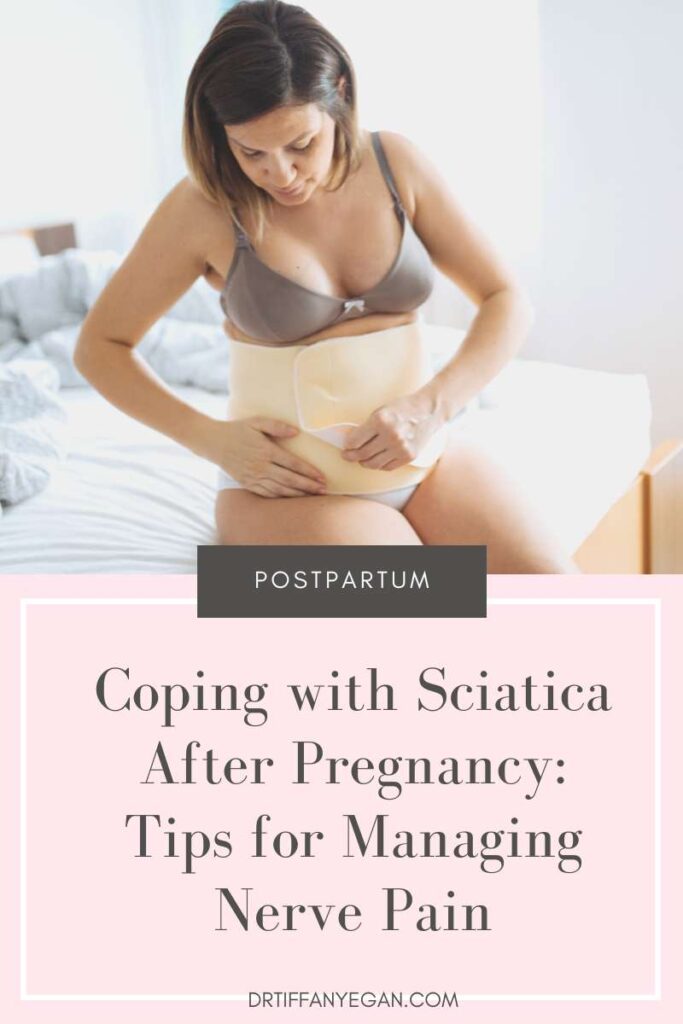How to Relieve Sciatica After Pregnancy: Tips for New Moms
Having a baby is a joyous time, but it can also be filled with aches, pains, and other discomforts. One of the most common issues women face post-pregnancy is sciatica, a painful nerve condition that can affect the lower back and legs. In this article, we’ll discuss what sciatica is, what causes it, and how to manage it after pregnancy.
What is Sciatica After Pregnancy?
Sciatica is a condition that is caused by the sciatic nerve in the lower back becoming compressed or irritated. This causes pain, numbness, and tingling sensations in the back, buttocks, and legs, and can make it difficult to move or walk. It’s estimated that up to 40% of pregnant women experience sciatica, and it can be especially painful after delivery.
The sciatic nerve is the longest nerve in the body, and it runs from the lower back, through the buttocks, and down the legs. When this nerve becomes compressed or irritated, it can cause severe pain and discomfort. Sciatica is more common in pregnant women because of the extra weight that is put on the lower back and the hormonal changes that occur during pregnancy.
Does sciatica pain go away after pregnancy?
After experiencing sciatica during my first pregnancy and after having three babies, I can tell you that I don’t have any sciatica pain anymore. The road was not easy and there were times that I thought it would be a lifelong journey. As a chiropractor, I saw many postpartum moms deal with sciatic pain and I can assure you that it will eventually pass. Make some lifestyle changes, get some advice and be persistant!
According to Dr. Alfred O. Bonati, MD, Founder and Chief Orthopaedic Surgeon at The Bonati Spine Institute, “Unless there’s an additional injury during childbirth or a pre-existing condition which was only worsened by childbirth, every one of these problems generally resolves within three months after delivery. Usually, these women are young and can heal faster and get stronger faster.”
Need some signs of improving sciatica? Generally, a reduction or change in symptoms is the first phase (out of three phases) of healing to look for. Do you notice that your pain feels different day to day? That’s a good sign!
Causes of Sciatica After Pregnancy
There are a number of possible causes of sciatica after pregnancy. These include:
- Hormonal Changes: Hormonal changes during pregnancy can cause the ligaments and muscles in the lower back to loosen, which can put extra pressure on the sciatic nerve.
- Weight Gain: Pregnancy weight gain is normal and expected, but having extra weight in the abdomen and lower back can put strain on the sciatic nerve.
- Posture Changes: Pregnant women often experience changes in posture, which can put extra pressure on the sciatic nerve.
- Pelvic Floor Dysfunction: Pelvic floor muscles can become weakened during pregnancy, which can lead to sciatica.
- Pelvic Instability: Pregnant women can experience pelvic instability due to the extra weight, which can cause the sciatic nerve to become compressed.
Symptoms of Sciatica After Pregnancy
The most common symptom associated with sciatica after pregnancy is pain in the lower back and legs. Other symptoms can include numbness, tingling, and weakness in the legs, as well as a burning sensation. In some cases, sciatica can cause muscle weakness and difficulty standing or walking.
Complications of Sciatica After Pregnancy
Sciatica can be a painful and debilitating condition, but it’s usually not serious. However, if left untreated, it can cause complications such as:
- Numbness and Weakness: If the sciatic nerve is compressed for too long, it can cause numbness and weakness in the affected area.
- Loss of Mobility: If the sciatic nerve is compressed for too long, it can cause loss of mobility in the affected area.
- Chronic Pain: Sciatica can cause chronic pain if left untreated.

Diagnosing Sciatica After Pregnancy
If you experience any of the symptoms of sciatica after pregnancy, it’s important to make an appointment with your doctor. Your doctor will ask you questions about your symptoms and do a physical exam. They may also order an X-ray, MRI, or CT scan to get a better look at the spine and check for any abnormalities.
Home Remedies and Natural Treatments for Sciatica After Pregnancy
In addition to medical treatments, there are also some home remedies and natural treatments that can help manage the pain and discomfort of sciatica after pregnancy. These include:
- Heat and Cold Therapy: Applying heat or cold packs to the affected area can help reduce pain and inflammation.
- Exercise: Gentle stretching and low-impact exercises can help strengthen the muscles and improve flexibility.
- Diet: Eating a healthy, balanced diet can help reduce inflammation and keep your body strong.
- Stress Reduction: Stress can worsen sciatica symptoms, so it’s important to manage stress levels.
It’s important to take note of your symptoms on a daily basis so you know what is helping or hurting your sciatica pain. You can also notice an over all trend of symptoms either worsening, improving or staying constant, which can give you some ideas on how to treat the condition so you can eventually heal! Try using this Sciatica Pain Diary for keeping track of your symptoms!
Stretches and Exercises for Sciatica After Pregnancy
Stretching and low-impact exercises can be an effective way to manage the pain and discomfort of sciatica after pregnancy. Some stretches and exercises that can help include:
- Hamstring Stretch: Sit on the floor with one leg extended in front of you and the other bent with the foot flat on the floor. Lean forward, keeping your back straight, until you feel a mild stretch in the back of your thigh. Hold for 30 seconds and repeat with the other leg.
- Gluteal Stretch: Lie on your back and cross one leg over the other, with the knee bent and the foot on the floor. Pull the knee of your bent leg towards your chest until you feel a mild stretch in your buttocks. Hold for 30 seconds and repeat with the other leg.
- Hip Flexor Stretch: Start in a kneeling position and step one leg forward, bending the knee and keeping the other leg straight behind you. Lean forward, keeping your back straight, until you feel a mild stretch in the front of your hip. Hold for 30 seconds and repeat with the other leg.
- Abdominal Bracing: Lie on your back and draw your belly button towards your spine. Hold for 5-10 seconds and then relax. Repeat 10 times.
Alternative and Complementary Treatments for Sciatica After Pregnancy
In addition to traditional treatments, there are also some alternative and complementary treatments that can be used to manage the pain and discomfort of sciatica after pregnancy. These include:
- Acupuncture: Acupuncture is a form of traditional Chinese medicine that involves inserting thin needles into specific points on the body to help balance energy and reduce pain and inflammation.
- Massage: Massage can help relax the muscles and reduce tension in the lower back and legs.
- Yoga: Certain poses can help stretch and strengthen the muscles and improve flexibility.
- Chiropractic Care: Chiropractic care can help realign the spine and reduce the pressure on the sciatic nerve.
Sciatica After Pregnancy Treatment
The treatment for sciatica after pregnancy will depend on the underlying cause and severity of the condition. Generally, the goal of treatment is to relieve the pain and discomfort and restore mobility. Treatment options can include:
- Medication: Your doctor may prescribe medications such as anti-inflammatory drugs, muscle relaxants, or painkillers to reduce pain and inflammation.
- Physical Therapy: Physical therapy can help strengthen the muscles and improve flexibility, which can reduce the pressure on the sciatic nerve.
- Surgery: In rare cases, surgery may be necessary to remove a disc or bone spur that is compressing the sciatic nerve.
Conclusion
Sciatica after pregnancy is a common condition that can cause pain, numbness, and tingling in the lower back and legs. For starters, there are some home remedies and natural treatments that can help reduce pain and discomfort that you can try. Stretches and exercises can also be helpful in managing sciatica after pregnancy. But, make sure you are cleared to start exercise postpartum!
If these at-home treatments don’t help, there are also alternative and complementary treatments such as acupuncture, massage, yoga, and chiropractic care that can be used to manage the pain and discomfort. And lastly, if the alternative treatments don’t help then you can go the traditional medical treatment route, where options can include medications, physical therapy, and surgery. It also works really well to combine treatments for a more aggressive approach.
Feel free to message me! I would love to hear from you.






